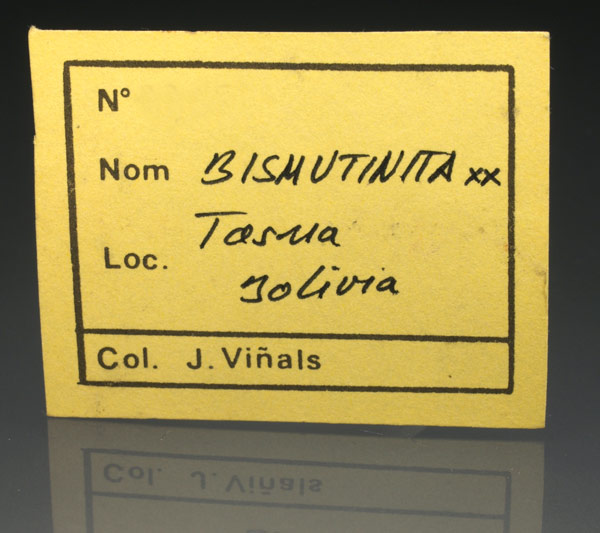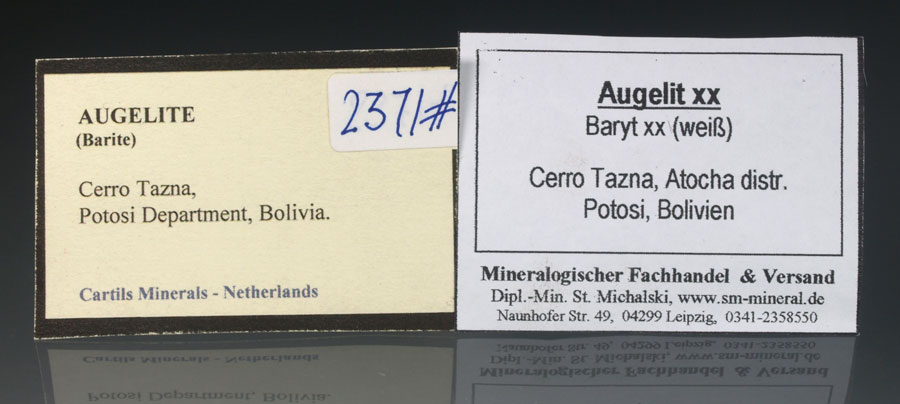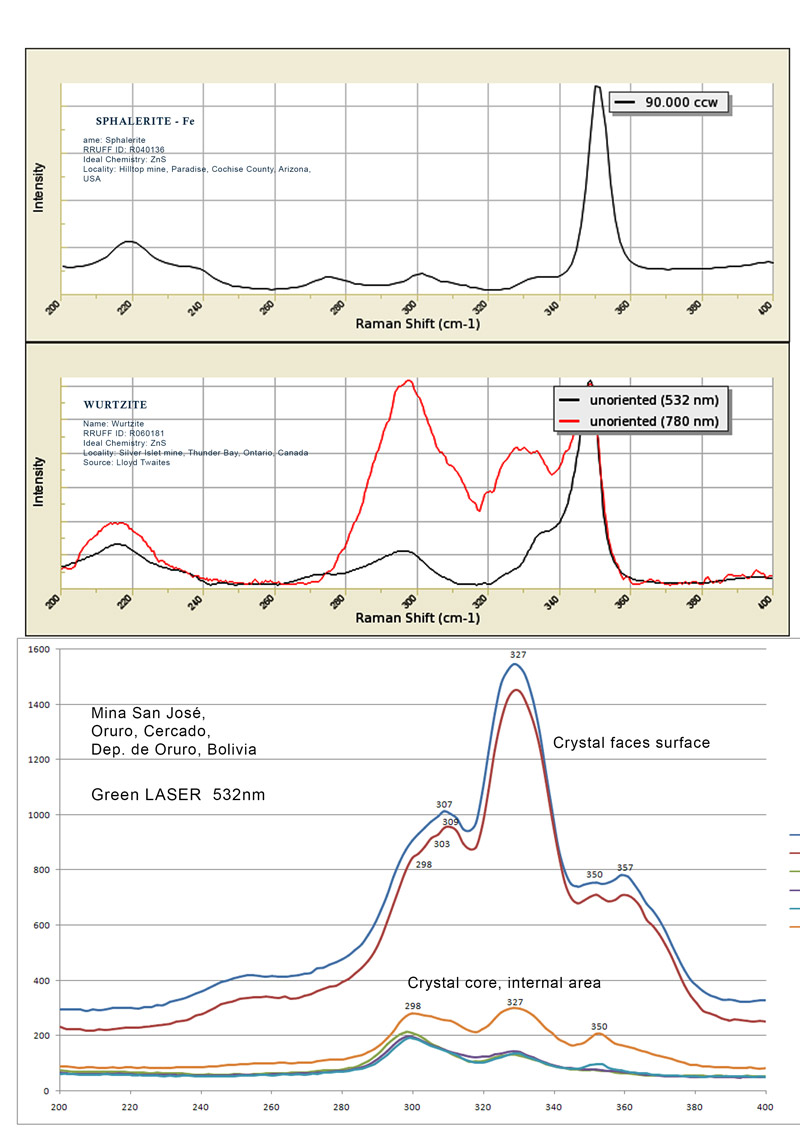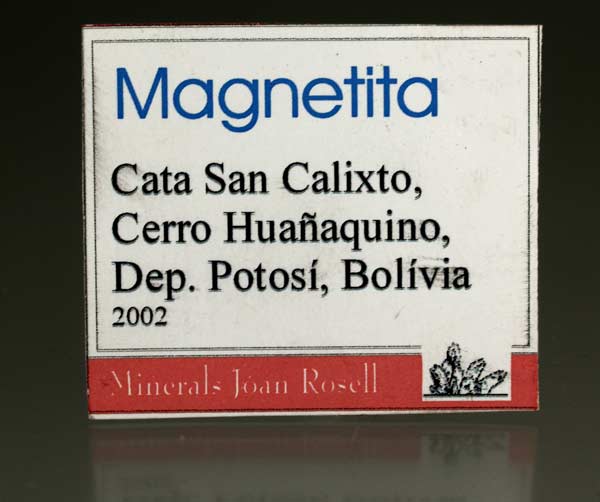- Home About RM Minerals
- Virtual Photo Museum Blog RM Contact
- Microscopy and instruments How to Buy Disclaimer
Copyright 2010-2024
www.rosellminerals.com

These specimens from the Siglo XX Mine present defined, brilliant, translucent and light orange colour monazite-(Ce) crystals. They are accompanied by hyaline quartz and black-brown cassiterite on matrix. Some are twinned. Monazite is found in small quantities in this mine.
Monazite gets its name from the Greek word μουάζω "monazein" meaning "to be alone," alluding to its isolated crystals and their rarity when they were first found. Monazite is generally found in granitic pegmatites, but these crystals are found in hydrothermal veins with tin and the absence of thorium (generally an accompanying element of monazite).
-Llallagua-Bolivia-e.jpg)
This is a really good crystal cluster of bismuthinite from the Mina Tazna in Bolivia. It is formed by large, terminated, prismatic crystals of bismuthinite, divergent, gray metallic. Some crystals show a metallic patina from a thin coating of marcasite/pyrite. On the back side some quartz crystals and gray-white uncovered metallic natural bismuthinite crystals. The Tazna Mine is a historic bismuth-tungsten mine in the high Andes of Bolivia that has produced noteworthy specimens for decades. Samples with this quality are very rare seen on the market. Specially for connoisseur "gray" mineral collectors...

In this Bolivian Andean mining area, around 2010-2013, a small area with antimony and silver ore was found, highlighting some specimens of stephanite, a silver sulfoantimonide. This floater specimen is formed by a group of interpenetrated crystals, with parallel growth, and showing orthorhombic prism shapes with striations and complex terminal faces. It is distinguished from pyrargyrite by being completely opaque to light, while the latter usually gives red colors (red silvers). An exceptional specimen reminiscent of the best and ancient Mexican stephanite, although this is from the Porco mine, the oldest and most significant silver mine in Bolivia.
In this Bolivian Andean mining area, around 2010-2013, a small area with antimony and silver ore was found, highlighting some specimens of stephanite, a silver sulfoantimonide. This floater specimen is formed by a group of interpenetrated crystals, with parallel growth, and showing orthorhombic prism shapes with striations and complex terminal faces, some of them are doubly terminated. It is distinguished from pyrargyrite by being completely opaque to light, while the latter usually gives red colors (red silvers). An exceptional specimen reminiscent of the best and ancient Mexican stephanite, although this is from the Porco mine, the oldest and most significant silver mine in Bolivia.
In this Bolivian Andean mining area, around 2010-2013, a small area with antimony and silver ore was found, highlighting some specimens of stephanite, a silver sulfoantimonide. This floater specimen is formed by a group of interpenetrated crystals, with parallel growth, and showing orthorhombic prism shapes with striations and complex terminal faces. It is distinguished from pyrargyrite by being completely opaque to light, while the latter usually gives red colors (red silvers). An exceptional specimen reminiscent of the best and ancient Mexican stephanite, although this is from the Porco mine, the oldest and most significant silver mine in Bolivia.
In this Bolivian Andean mining area, around 2010-2013, a small area with antimony and silver ore was found, highlighting some specimens of stephanite, a silver sulfoantimonide. This floater specimen is formed by a group of interpenetrated crystals, with parallel growth, and showing orthorhombic prism shapes with striations and complex terminal faces, some of them are doubly terminated. It is distinguished from pyrargyrite by being completely opaque to light, while the latter usually gives red colors (red silvers). An exceptional specimen reminiscent of the best and ancient Mexican stephanite, although this is from the Porco mine, the oldest and most significant silver mine in Bolivia.
In this specimen we can observe a large group of augelite crystals, very brilliant, transparent and with very well defined faces and edges. Under magnification we can see that these crystals are richly faceted and have a pseudorhomboidal shape. They are accompanied on the matrix by small white prismatic crystals of baryte, along with numerous octahedral pyrite crystals. This specimen belongs from the Laskowski collection and is accompanied by various labels.

Specimens of magnetite from Cerro Huañaquino were well known decades ago, but today it is not easy to find them, and even less with the quality of this specimen that we propose. It is a druse of very bright octahedral crystals with an intense black colour that are disposed on the rocky matrix.
Specimens of magnetite from Cerro Huañaquino were well known decades ago, but today it is not easy to find them, and even less with the quality of this specimen that we propose. It is a druse of very bright octahedral crystals with an intense black colour that are disposed on the rocky matrix.
A huge size group of interpenetrated crystals of hexagonal shape, with a dark gray metallic color and brilliant luster. Crystals of this specimen remind wurtzite for its complex hexagonal shape and dipyramids observed. Many similar samples from this mine has been classified as wurtzite. For this reason we heve proceeded to analyze them. The results indicate that this is a really amazing and interesting pseudomorphosis of sphalerite after wurtzite. A great opportunity for psedomorph and Bolivian mineral collectors.
Studies were carried on by X-ray diffraction of the matrix and hexagonal crystals. They have shown that it is sphalerite. Also, the Raman spectra shows that in the innermost areas of the crystals wurtzite presence has been detected, the rest is sphalerite. SEM-EDS yield a composition: (Zn1.05,Fe0.09)Σ=1.14S1.00.
Specimens of well developed wurtzite are unusual. This hexagonal zinc sulphide, with some iron, presents dimorphism with sphalerite. It is known that wurtzite is stable at high temperatures, low temperatures being the most stable phase sphalerite. This Bolivian mine is the type locality for the wurtzite. We will send the analysis reports to the specimen buyer.

Specimen of a little-known locality. These sample shows aggregates of silver crystals, with an intense luster and tones between white and golden. They are disposed on a matrix with quartz and iron oxides with which they contrast.
Group of cassiterite crystals, very sharp, with defined faces and edges, good brilliance and transparence showing toasted honey lights. They show very clear cyclic twins. They are disposed very aerial and aesthetically contrasting on a matrix of quartz crystals with arsenopyrite. From a classic locality.
Group of cassiterite crystals, very sharp, with defined faces and edges, good brilliance and transparence showing toasted honey lights. They show very clear cyclic twins. They are disposed very aesthetically contrasting on a matrix of quartz crystals. From a classic locality.
Group of cassiterite crystals, very sharp, with defined faces and edges, good brilliance and transparence showing toasted honey lights. They show very clear cyclic twins. They are disposed very aesthetically contrasting on a matrix of quartz crystals with arsenopyrite. From a classic locality.
The Siglo XX mine is one of the most impressive Bolivian mining localities. It produces some amazing specimens of common species like quartz, few of the with the Japan-Law twin which are are well known in the mineral world. In this sample we can enjoy a good sized Japan-twin quartz crystals, with transparence and luster. This nice twin is disposed on a druse of hyaline quartz crystals.
To give a unique touch to the specimen a group of cassiterite crystals with good brilliance and deep black color, very rich in faces, interpenetrating between them and with some quartz crystals. A superb specimen.
These specimens of Bolivian galena are unusual in collections. These mines on Cerro Sayari (4,300 meters elevation) were mined for silver during the colonial times. In this sample we would like to emphisize a group of sharp galena crystals, with metallic luster and polysynthetic growths, showing cube faces and minor facets of the octahedron. Aesthetic piece and very rare on the market.
A huge size group of interpenetrated crystals of hexagonal shape, with a dark gray metallic color and brilliant luster. Crystals of this specimen remind wurtzite for its complex hexagonal shape and dipyramids observed. Many similar samples from this mine has been classified as wurtzite. For this reason we heve proceeded to analyze them. The results indicate that this is a really amazing and interesting pseudomorphosis of sphalerite after wurtzite. A great opportunity for psedomorph and Bolivian mineral collectors.
Studies were carried on by X-ray diffraction of the matrix and hexagonal crystals. They have shown that it is sphalerite. Also, the Raman spectra shows that in the innermost areas of the crystals wurtzite presence has been detected, the rest is sphalerite. SEM-EDS yield a composition: (Zn1.05,Fe0.09)Σ=1.14S1.00.
Specimens of well developed wurtzite are unusual. This hexagonal zinc sulphide, with some iron, presents dimorphism with sphalerite. It is known that wurtzite is stable at high temperatures, low temperatures being the most stable phase sphalerite. This Bolivian mine is the type locality for the wurtzite. We will send the analysis reports to the specimen buyer.
Group of interpenetrated crystals of hexagonal shape, with a dark gray metallic color and brilliant luster. Crystals of this specimen remind wurtzite for its hexagonal shape and dipyramids observed. Many similar samples from this mine has been classified as wurtzite. For this reason we heve proceeded to analyze them. The results indicate that this is a really amazing and interesting pseudomorphosis of sphalerite after wurtzite. Accompanied by nice brilliant franckeite globular crystal aggregates and small hexagonal prism of plumbogummite (also a pseudomorph). A great opportunity for psedomorph and Bolivian mineral collectors.
Studies were carried on by X-ray diffraction of the matrix and hexagonal crystals. They have shown that it is sphalerite. Also, the Raman spectra shows that in the innermost areas of the crystals wurtzite presence has been detected, the rest is sphalerite. SEM-EDS yield a composition: (Zn1.05,Fe0.09)Σ=1.14S1.00.
Specimens of well developed wurtzite are unusual. This hexagonal zinc sulphide, with some iron, presents dimorphism with sphalerite. It is known that wurtzite is stable at high temperatures, low temperatures being the most stable phase sphalerite. This Bolivian mine is the type locality for the wurtzite. We will send the analysis reports to the specimen buyer.
Rich group of octahedral magnetite crystals with a good size. Brilliant, intense gray metallic tone and disposed very aesthetically on the rocky matrix. A classic that is hard to see on the market.

A very rich specimen of this rare sulphosalt showing brilliant and sharp franckeite lanceolate crystals forming globular aggregates. They are accompanied by delicate and shiny needles of jamesonite and idiomorphic crystals stannite with a brown color and dull. This combination makes these samples pieces very interesting for systematic mineral collectors. We have analized each species and we will send analysis to the buyer.
Specimens from this mine are hard to distinguish from those of the neighboring San Jose mine and, since the administrative office for both mines was at San Jose, most Itos mine specimens in foreign collections ended up labelled "San Jose mine".
These rounded nuggests are found nowadays in the bed of the river Viloque. They have been teared off from the mineralized veins by the glacial erosion and actually are found in gold placers. This piece is a classic example of these nuggets, intense silvery metallic luster, rounded by abrasion, and a good size for this locality. Native bismuth is known from many localities worldwide, but nuggets from Viloque River are the mostn known for the species.
A very aesthetic copper specimen formed by laminar to arborescent forms, with rounded crystals and very aerial disposed. The color is natural, withouth chemical treatments, and it shows some luster. It comes from Bolivian mine, near CoroCoro, famous for pseudomorphs of native copper after hexagonal cyclic twins of aragonite, but these laminar shape is uncommon for locality.
Perfection! A nice crystal of vivianite, with a deep green color and well defined. With transparence that show the green tone characteristic for the species. Very aerial disposed on a solid sandstone matrix, sulfur free which ensures the stability of the specimen in the future. It is better in live than on the photo, but enjoy them. An exceptional specimen.
Group of Sigloite crystals pseudomorph after Paravauxite, partially covering the rocky matrix. Paravauxite and sigloite differ chemically by the presence of a single water molecule. Sigloite is white to yellowish. The Siglo XX Mine is the type locality for Sigloite species.
